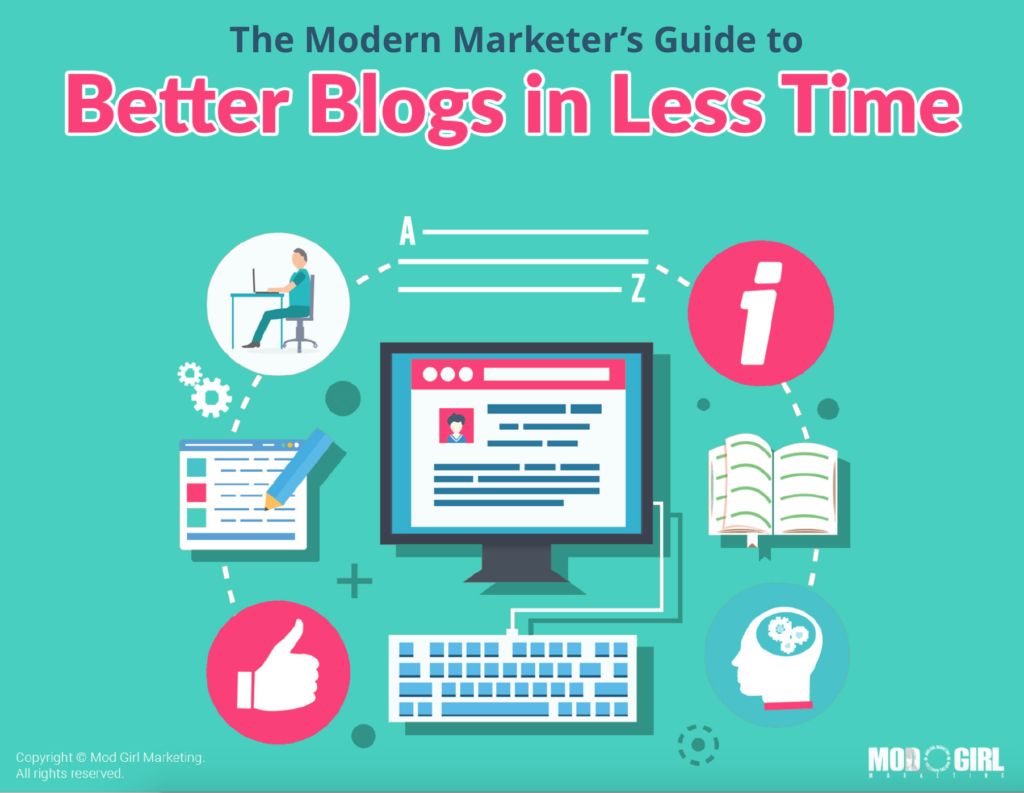
Many misconceptions about blog SEO persist. Marketers assume that they shouldn’t bother with keywords anymore because Google algorithm creators have emphasized using natural, organic language rather than “keyword-stuffing.” They feel that meta data isn’t worth their time or that backlinking is for spam-bots. None of this is true, but we can see what leads people to these conclusions, with so many alarmist headlines that “SEO is dead.” As a consultancy that gets FAST, impressive, clean results for our clients, we can tell you that assertion is completely untrue and there are, in fact, 8 things you can do to your blog posts to get them to perform better in search.
1. Get the right topics and terms.
A well-performing blog post starts with a topic that people are interested in and actively searching. For instance, if you wrote a post on “slythytovery,” you would find there are only a few pages of very poor Google search results on this topic — mostly because it’s an obscure term that no one cares about (other than the fact it, at one time, had just ONE Google search result). Concentrating blog efforts on optimizing overly generic terms like “SEM” and “SEO” won’t help you, nor will overusing clunky keyword phrases like “tips for optimizing your blog post for SEO.” We recommend using a tool like Buzzsumo to see what your competitors are blogging about and what your target market is interested in reading. Of course, there is always the trusty Google Adwords Keyword Planner, too. Other programs we love for keyword research include HitTail and UberSuggest.
2. Standardize your process.
Having a refined process to produce consistent results every time can have a profound effect on your blog. Just as companies with documented, written content strategies produce better performing content, so do businesses with consistent, written blog optimization protocols succeed. A few hours bouncing ideas off a consultant can do wonders for a business, as can inquiring about a blog SEO audit.
3. Make sure your blog’s not too slow.

Image Source: QuickSprout.com
You’ve got about 4 seconds to make an impression on visitors before they are gone forever. Google’s Page Speed Insights Tool is a great way to check yourself. If you find your site is operating too slow, there are several quick fixes, from compressing images and using a content delivery network, to reducing plugin load or switching your web host.
4. Tap the power of internal linking.
Every post we write contains a load of links — including many links back to our old posts. This is quick and easy to do, but so effective in keeping readers on your site for longer. Why is this important? Consider this: MVMT Watches has observed that Pinterest users account for 10% of their site traffic and 20% of their mobile traffic. These readers average 1,600% more time on site than other visitors — and consistently average the brand’s “highest average order value”. Is that a coincidence or is the increased time spent on site leading to bigger expenditures? So here’s what you do: go to Google, type in your website URL and a keyword for what you’re currently writing about (in our case it’d be 8waysin8days.com seo) to see old results that may be worth mentioning again. Choose anchor text that contains a keyword phrase you think people might search. We try to sprinkle a link in for every 100-200 words or so. You can gain even more traction by going back to three old posts and inserting the link to the new post you’ve just written.
5. Don’t forget about image optimization.

Skyword research has found that content with images receives 94% more views on average than plain text. Photos not only look good, but can function well within your post. A well optimized photo will bring in traffic surfing the Google Image search. We recommend taking an extra minute to fill in all the necessary ALT text and reading this blog entry on The Best Image SEO Tips You Will Ever Need.
6. Build solid permalinks.
You’ll notice the extension for this blog is /optimize-your-blog-post. If we left it to chance, the permalink may have contained every word in the post headline (/8-Ways-To-Optimize-Your-Blog-Post-&-Kick-Ass-At-SEO) or may have defaulted to a generic construct like (/?p=123). Permalinks play a major role in the organization of your website, with the simpler the better. If you get it right, you’ll notice increased traffic and lower bounce rates. You’ll want to: use dashes, rather than underscores; remove stop words like “is” and “are”; and include a keyword in the link.
7. Get the Yoast plugin.
Here’s an easy one that requires very little on your part, but improves the efficiency of your blogs and saves you time overnight. Having too many plugins can bog a WordPress site down, but the Yoast Plugin for SEO is one we use all the time to great effect. You can analyze how reader-friendly your posts are, easily insert meta descriptions and SEO titles, check your usage of keywords, and get reminders to link or use images.
8. Make sure each blog post has a call-to-action.
A call-to-action (CTA) doesn’t have to be a sleazy sales pitch that hits readers like an Acme anvil. Think of a call-to-action as a gentle way of guiding readers to the next step of information or making a purchase they already want to make. Vary up your calls so you don’t sound like an infomercial. Try verbs like: Download, Start, Build, Grow, Learn, Join, Try. You can ramp up the urgency by making it a limited time, expires soon, available today only, or ends tomorrow type of offer. You can make your CTA more relatable by using words like safe, risk-free, no-obligation, guaranteed, or results-oriented. Remember, if you don’t give your audience the next step of interaction with your brand, they’ll go elsewhere and give business to someone else.



